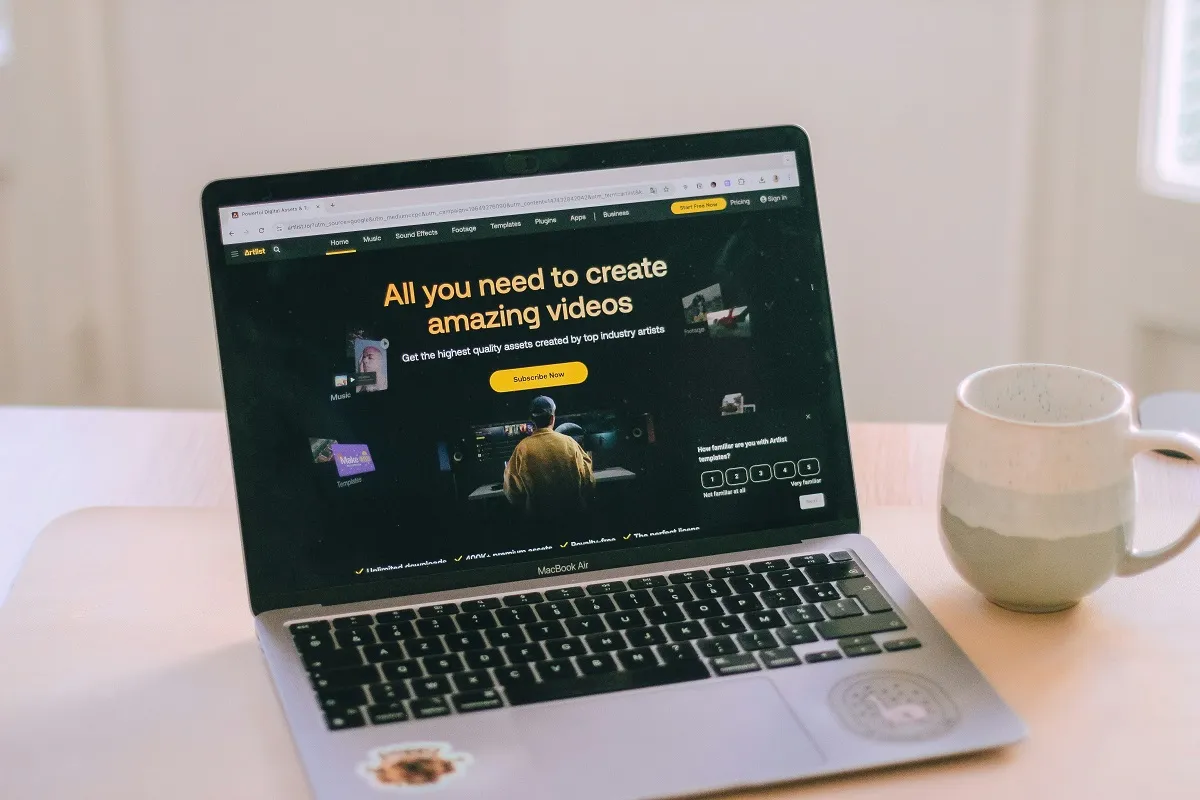Introduction
Every business, big or small, needs a strong online presence. A website isn’t just a digital business card anymore—it’s the first impression, the storefront, and the most powerful marketing tool. But here’s the challenge: creating a beautiful, functional site can get expensive, especially for startups and small businesses. The good news? It’s absolutely possible to get professional website design on a budget without sacrificing quality.
This guide explores how businesses can access affordable web design services that deliver modern, user-friendly websites without draining resources. From smart planning to cost-effective strategies, it’s all about working smarter, not spending more.
Why Budget-Friendly Web Design Matters
Web design often comes with the misconception that quality equals high cost. While premium features can add up, many businesses overpay for things they don’t need early on. A well-designed site doesn’t have to cost thousands—what matters is clarity, functionality, and branding consistency.
For small businesses and entrepreneurs, investing wisely means putting resources where they matter most: user experience and performance. Affordable solutions allow companies to launch quickly, attract customers, and grow without being buried under unnecessary expenses.
The key lies in choosing the right approach, the right designer, and the right strategy.
Common Myths About Affordable Website Design
Before diving into practical tips, it’s important to separate fact from fiction. Many businesses hesitate to look for affordable web design services because of these common myths:
- Myth 1: Lower cost means poor quality.
Not true. Skilled designers can create cost-effective websites by using templates, efficient coding, and strategic planning. - Myth 2: Budget websites can’t look professional.
Modern tools and design platforms make it possible to deliver sleek, mobile-friendly websites at lower costs. - Myth 3: It’s better to do it yourself.
DIY can save money upfront, but it often results in technical issues, poor SEO, and design limitations.
By debunking these myths, businesses can confidently pursue professional design without overspending.
Step 1: Define Your Website Goals
The first step in achieving a budget-friendly website is clarity. Businesses need to identify:
- What’s the primary purpose of the site? (e.g., sales, lead generation, portfolio)
- Who is the target audience?
- What features are essential versus “nice-to-have”?
For example, a local service provider may only need a few core pages—Home, Services, About, and Contact—while an eCommerce site requires advanced functionality. Defining goals upfront prevents paying for unnecessary extras and helps designers offer accurate quotes.
Step 2: Plan a Realistic Budget
Budget planning isn’t just about setting a number—it’s about knowing where to allocate funds. Most costs come from:
- Design and layout
- Domain and hosting
- Content creation
- Maintenance and updates
A realistic budget helps prioritize these elements. For many small businesses, starting with a basic yet professional design is smarter than delaying a launch for the “perfect” expensive site.
Step 3: Choose the Right Web Design Approach
There are multiple ways to achieve affordable web design services without cutting corners:
- Template-Based Design: Modern templates are customizable, mobile-friendly, and significantly cheaper than custom coding.
- CMS Platforms: Tools like WordPress, Wix, or Squarespace provide flexibility at a fraction of the cost.
- Freelancers or Small Agencies: Unlike large firms, smaller teams often offer personalized services at reasonable rates.
For businesses in Tennessee, looking into website design Knoxville providers can be a smart move—they often understand the local market and offer tailored pricing options.
Step 4: Prioritize Essential Features
A common mistake is adding features that aren’t needed early on. To keep costs low:
- Focus on core functionality: easy navigation, responsive design, fast loading speed.
- Add SEO basics: proper meta tags, keyword integration, and mobile optimization.
- Hold off on advanced tools like chatbots or complex integrations until the site generates revenue.
By prioritizing essentials, businesses ensure their website meets user expectations without overspending.
Step 5: Leverage Affordable Design Tools
Technology has made web design more accessible than ever. Businesses can take advantage of:
- Free or low-cost themes that look professional.
- Graphic design tools like Canva for creating branded visuals.
- Stock photo resources for high-quality images without hiring photographers.
These tools allow designers to keep prices down without compromising quality.
Step 6: Optimize for SEO from Day One
Affordable doesn’t mean cutting corners on visibility. A budget-friendly website should still:
- Include optimized headings and meta descriptions.
- Use proper keyword placement without overstuffing.
- Ensure fast loading speeds and mobile compatibility.
When implemented early, these practices save businesses from expensive fixes later. Many agencies offering affordable web design services include basic SEO as part of their packages, so businesses should confirm this before hiring.
Step 7: Work with Local Experts
Hiring locally can often reduce costs while improving communication. For example, small businesses looking for website design Knoxville experts can find agencies familiar with the local business environment, making it easier to build a site that appeals to the right audience.
Local designers often offer packages for startups, seasonal businesses, or local service providers, making them an excellent option for businesses wanting affordable yet professional results.
Step 8: Start Small, Scale Later
One of the smartest budget strategies is phased development:
- Launch a minimal yet functional version.
- Collect feedback from users.
- Gradually add features as revenue grows.
This approach prevents overspending upfront and ensures resources are allocated where they bring the most impact.
Step 9: Avoid Hidden Costs
When comparing design options, businesses should ask about:
- Ongoing maintenance fees.
- Hosting charges.
- Plugin or third-party app costs.
Affordable pricing should be transparent. Clear contracts prevent unexpected expenses that can turn a budget project into a costly one.
Step 10: Focus on Conversion-Friendly Design
A good website isn’t just about looking nice—it should convert visitors into customers. Budget websites can still include:
- Clear CTAs (Call-to-Actions)
- Mobile-friendly design
- Simple navigation
- Fast loading times
Conversion-focused design ensures every dollar spent contributes to business growth.
Best Platforms for Budget-Friendly Web Design
Several platforms stand out for businesses looking to build on a budget:
- WordPress – Flexible, affordable, and ideal for growth.
- Wix – Great for simple websites with drag-and-drop ease.
- Squarespace – Sleek designs with all-in-one hosting.
The choice depends on business goals, technical comfort, and scalability needs.
Working with the Right Partner
Finding the right designer or agency makes all the difference. When choosing a partner:
- Check their portfolio.
- Read client reviews.
- Ask about experience with small business websites.
Many local agencies, especially those specializing in website design Knoxville, offer packages that balance quality with cost-effectiveness.
Why Affordable Doesn’t Mean Cheap
There’s a big difference between “affordable” and “cheap.” Cheap often sacrifices design quality and long-term performance. Affordable means smart allocation of resources—getting the most value for your investment.
By working with professionals who understand small business needs, companies can enjoy premium design elements without premium pricing.
Conclusion
Professional website design on a budget isn’t just possible—it’s practical. With clear goals, smart planning, and the right partners, businesses can launch stunning websites without breaking the bank. Affordable solutions don’t compromise quality; they optimize it for cost, functionality, and growth.
For businesses ready to take the next step, partnering with experts who offer affordable web design services and understand the local market, like those specializing in website design Knoxville, is a game-changer.
Looking for a cost-effective, professional website that drives results? Explore tailored solutions from Hometown Creatives and get your business online—without blowing your budget.
FAQ
How can I get a professional website on a budget?
You can get a professional website on a budget by using template-based designs, working with small agencies or freelancers, and focusing on essential features first. Start small and scale as your business grows.
Are affordable web design services worth it?
Yes, affordable web design services are worth it when provided by experienced designers. They use efficient tools and strategies to deliver high-quality, responsive websites at lower costs.
What features should I prioritize on a low-budget website?
On a low-budget website, prioritize responsive design, fast loading speed, simple navigation, and clear calls-to-action. These essentials ensure a positive user experience without extra costs.
How much does an affordable website cost in the U.S.?
Affordable websites in the U.S. typically cost between $500 and $3,000, depending on features, design complexity, and whether you choose a freelancer, agency, or DIY platform.
Can a budget-friendly website still be SEO optimized?
Yes, a budget-friendly website can include basic SEO optimization. This includes keyword-rich content, proper meta tags, mobile responsiveness, and fast page speeds.
What is the difference between cheap and affordable web design?
Cheap web design often sacrifices quality and long-term performance, while affordable web design provides cost-effective solutions without compromising functionality or design standards.
Should I hire a local web designer for a budget project?
Hiring a local web designer can be beneficial for budget projects because they understand the local market, offer personalized support, and often provide competitive pricing.
Is DIY website design better than hiring professionals?
DIY website design can save money upfront but may lack professional polish, SEO, and scalability. Hiring professionals ensures better functionality and a stronger brand impression.
Can I start with a basic website and upgrade later?
Absolutely. Starting with a basic, well-designed website and upgrading as your business grows is a cost-effective strategy. This approach helps you launch quickly without overspending.






